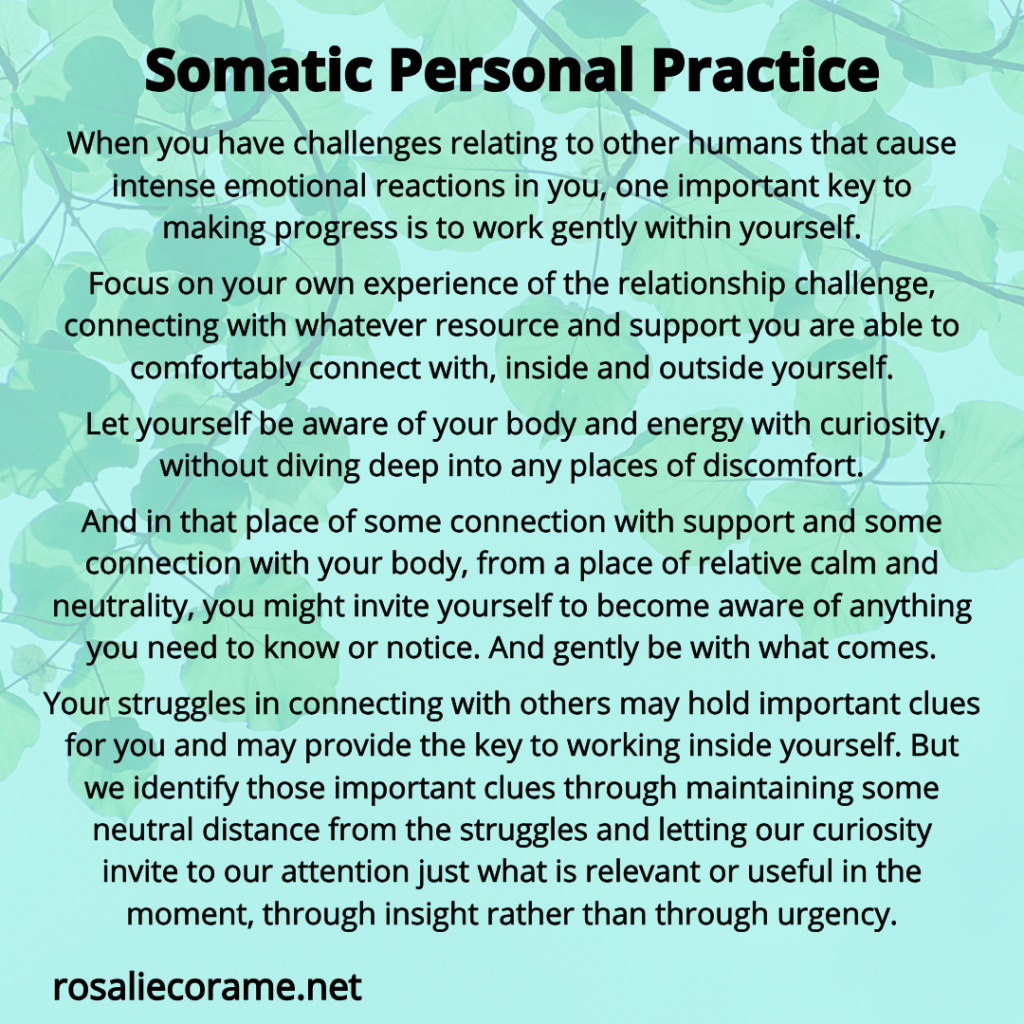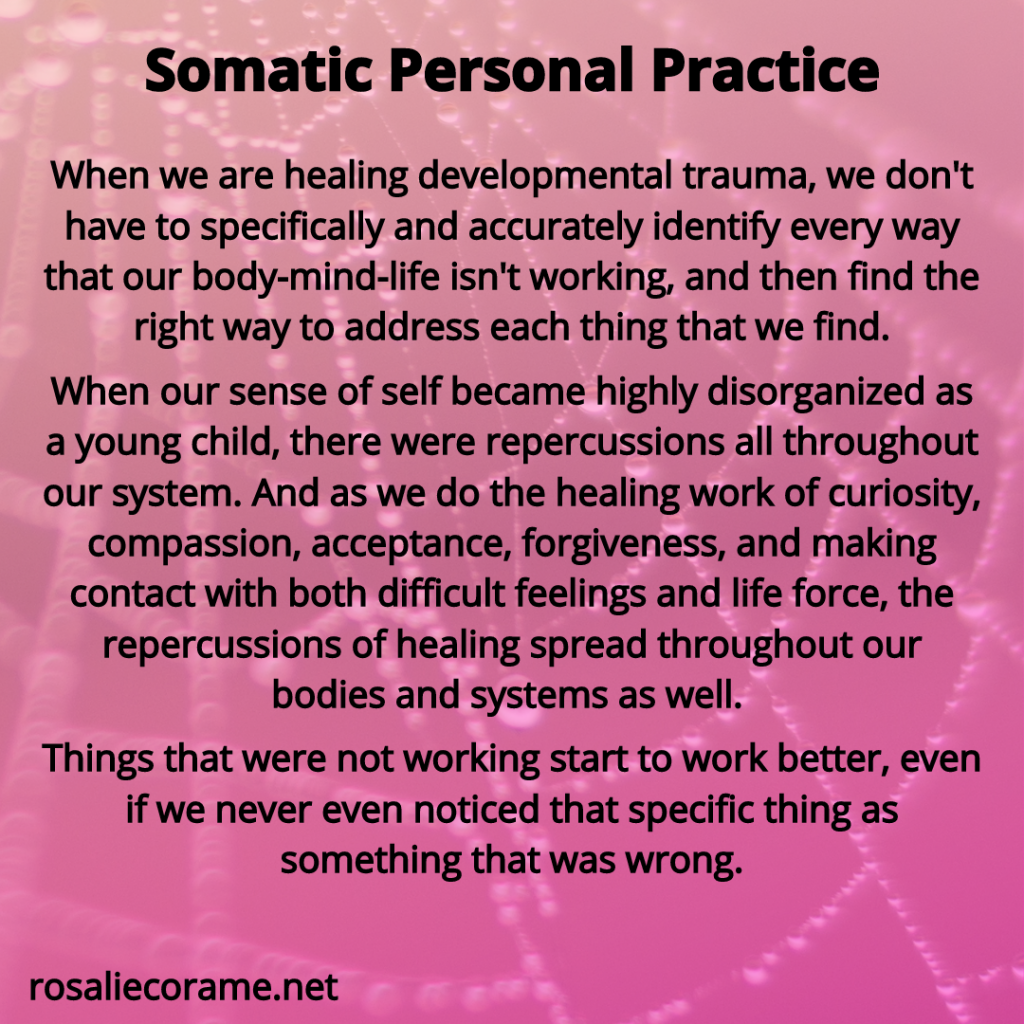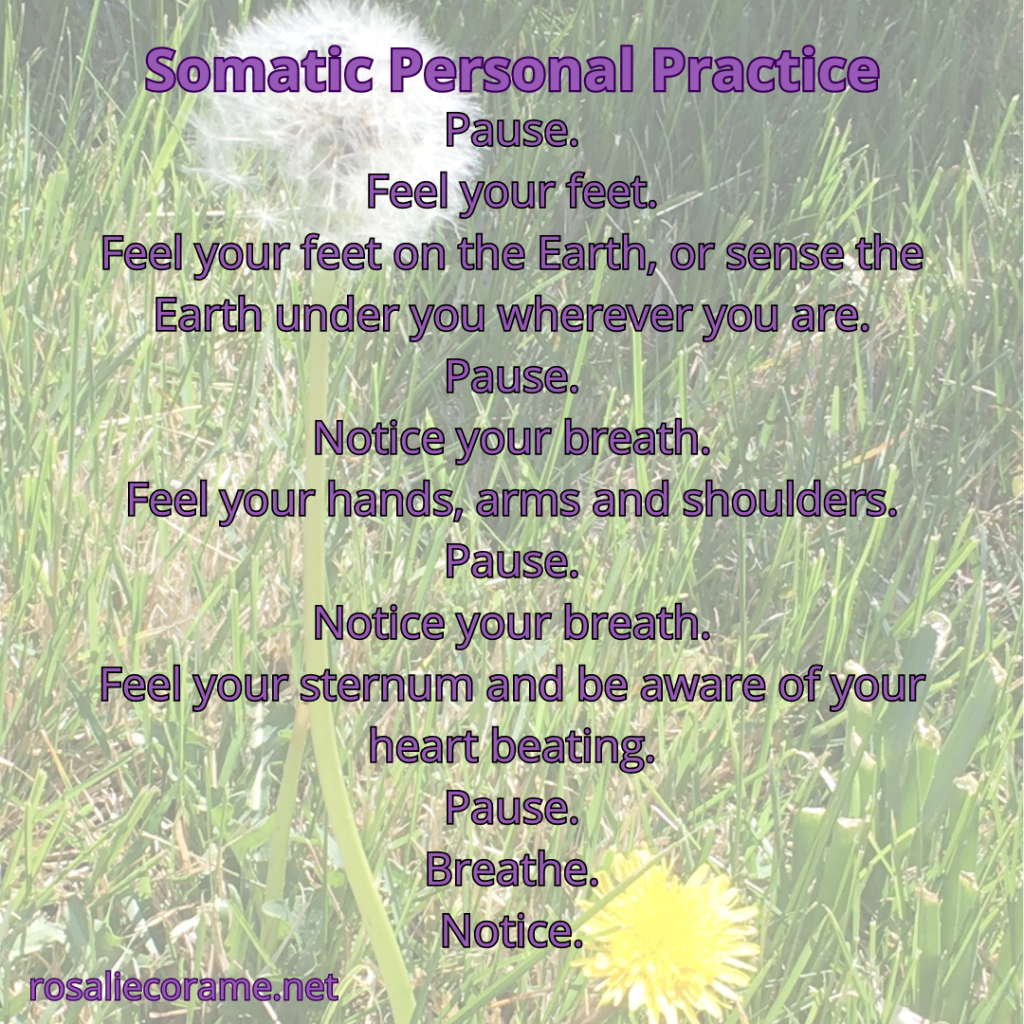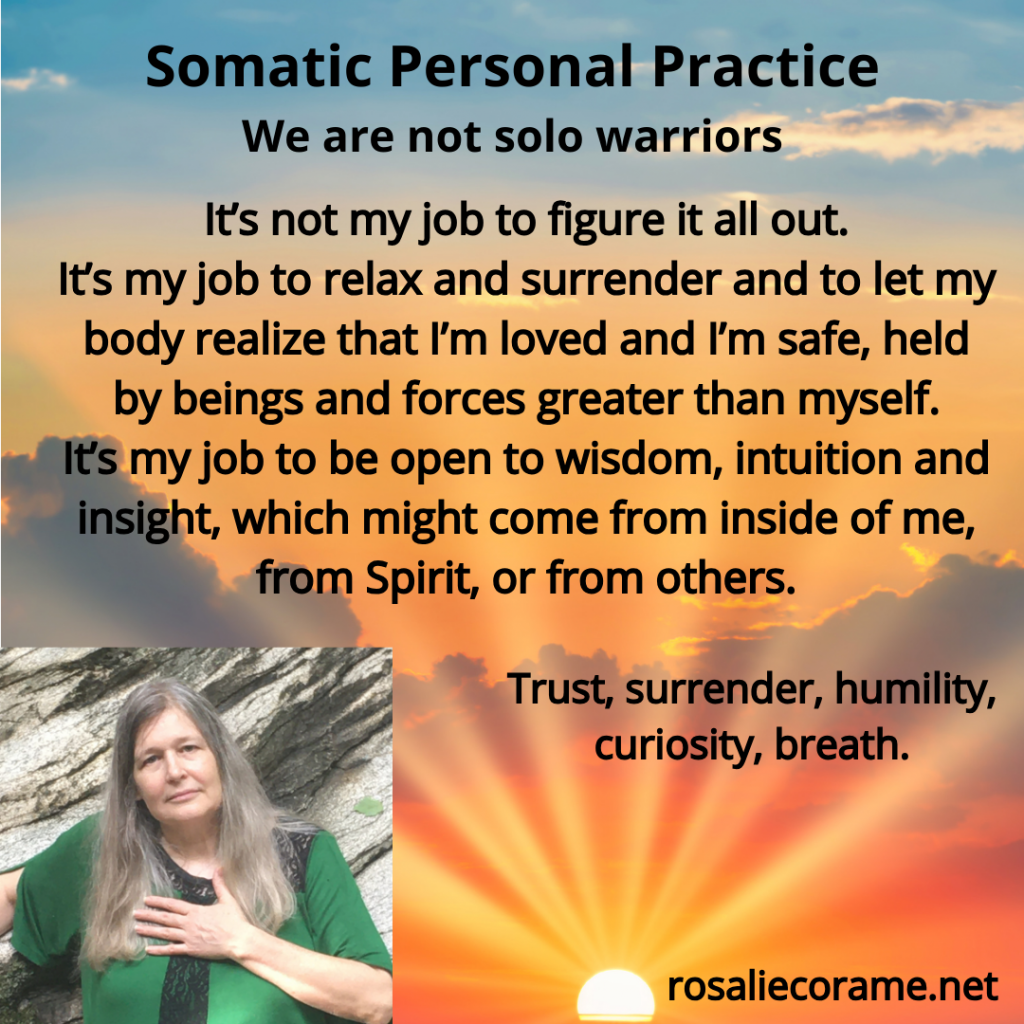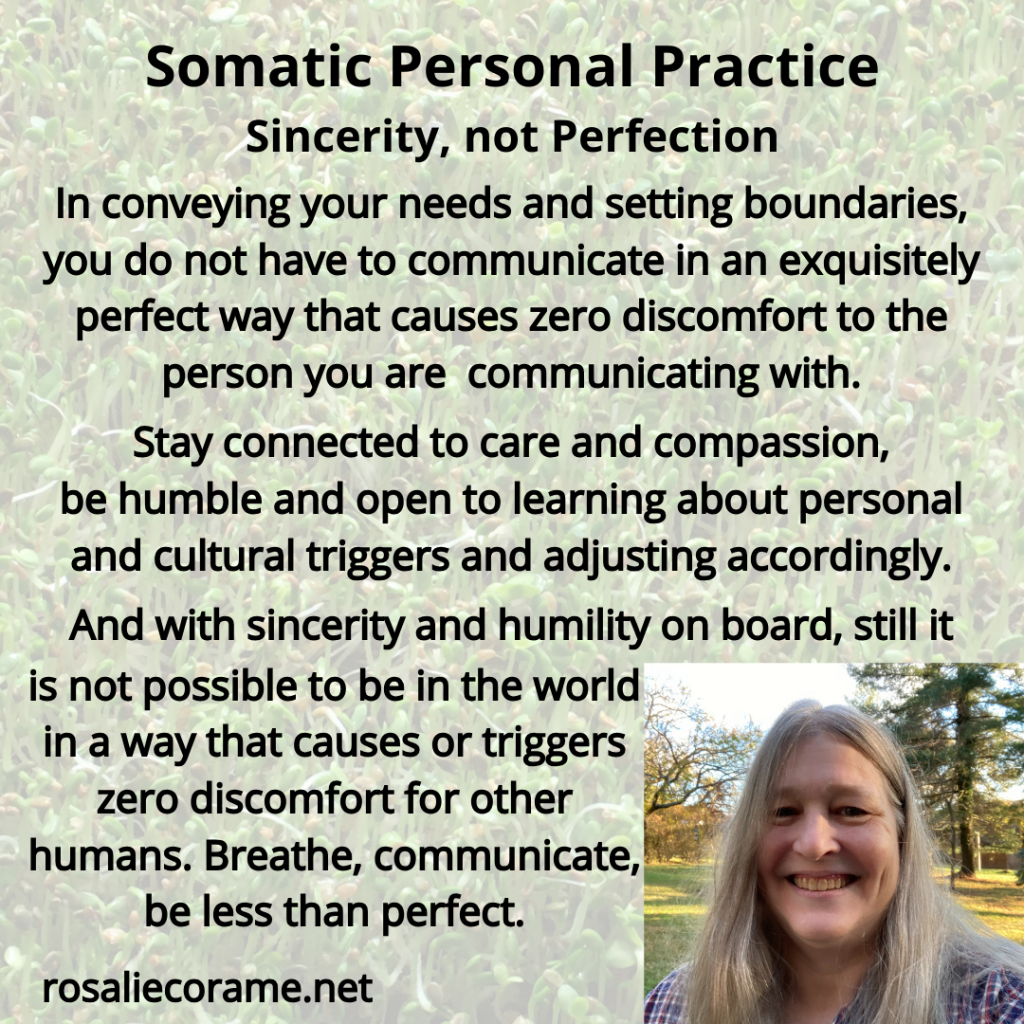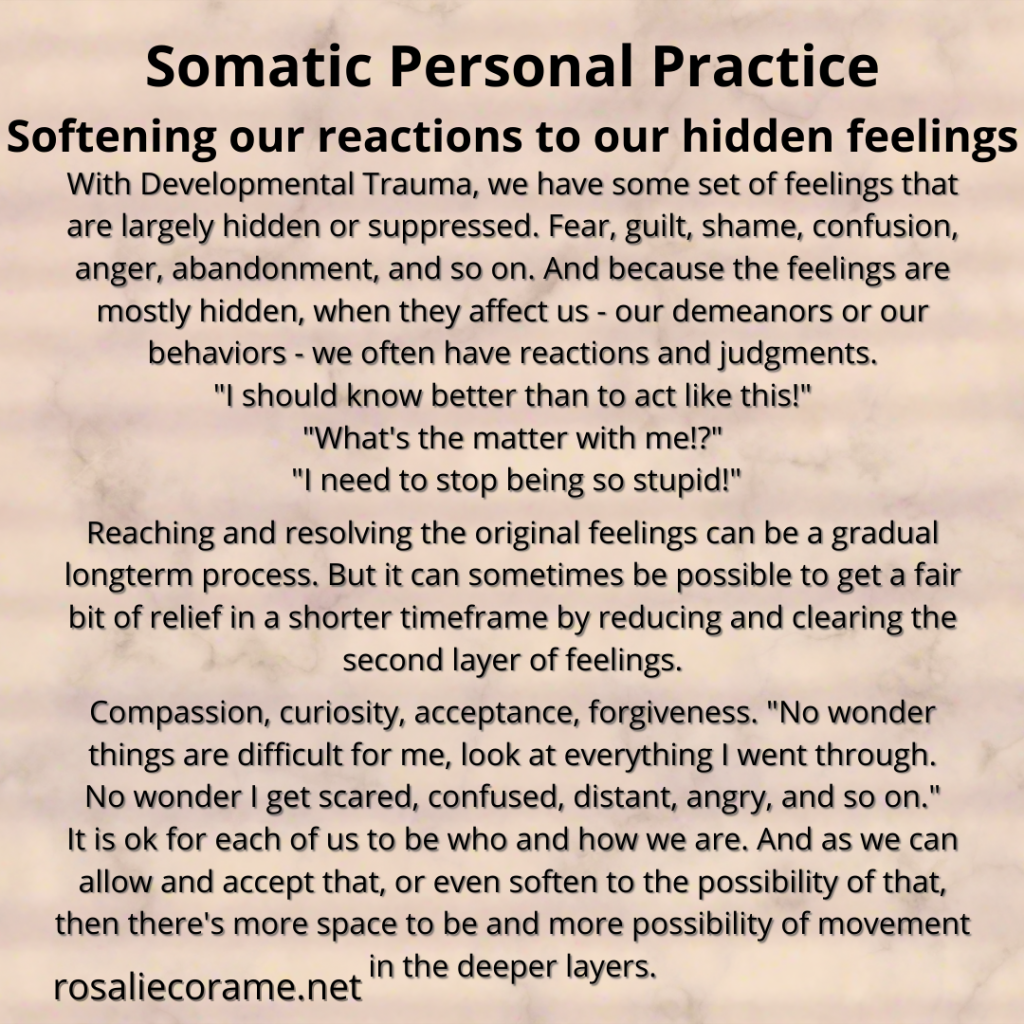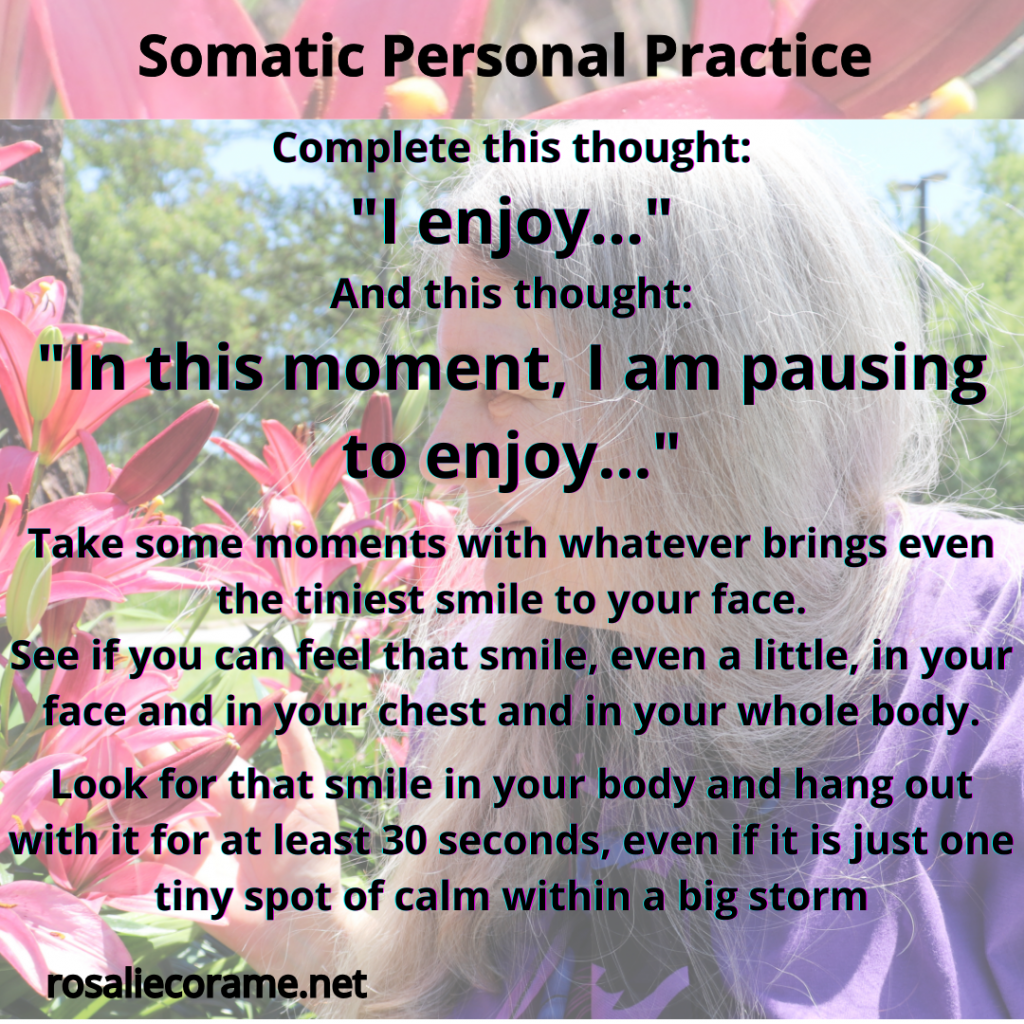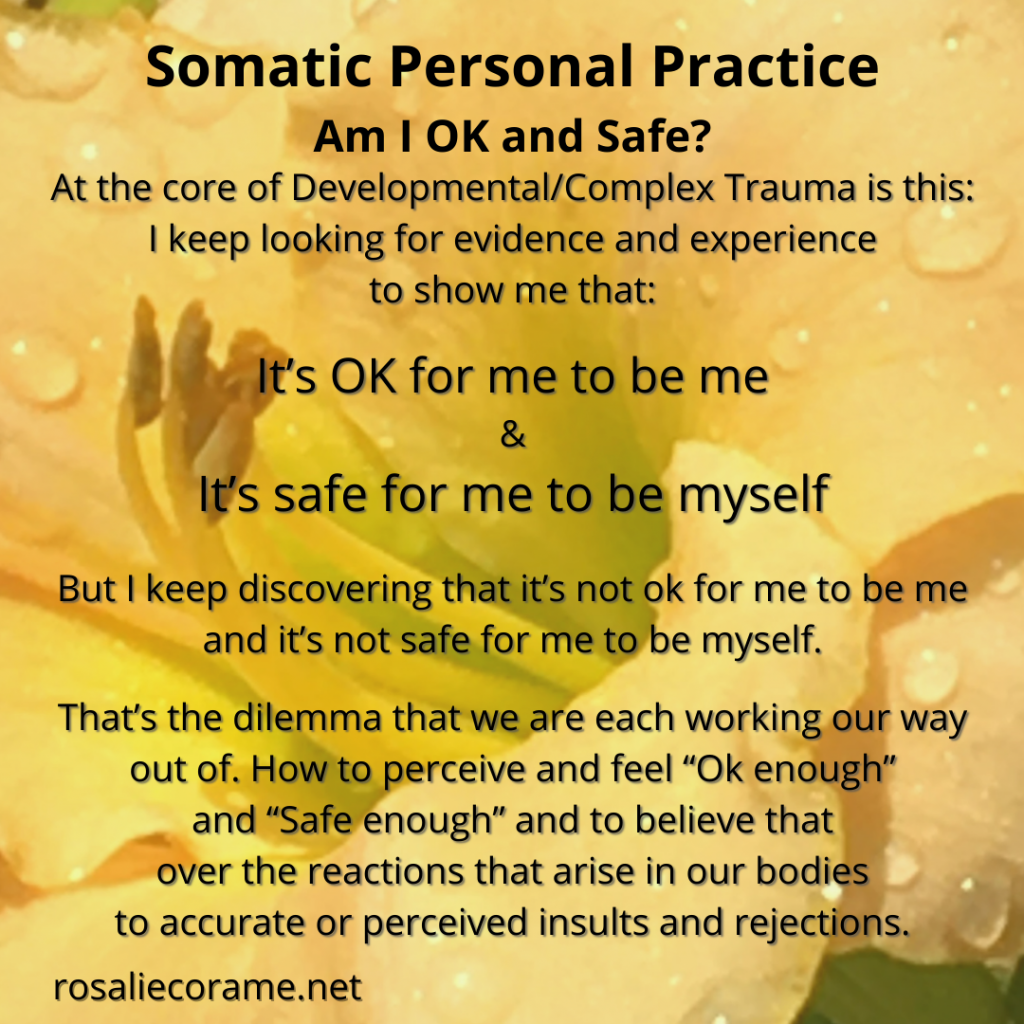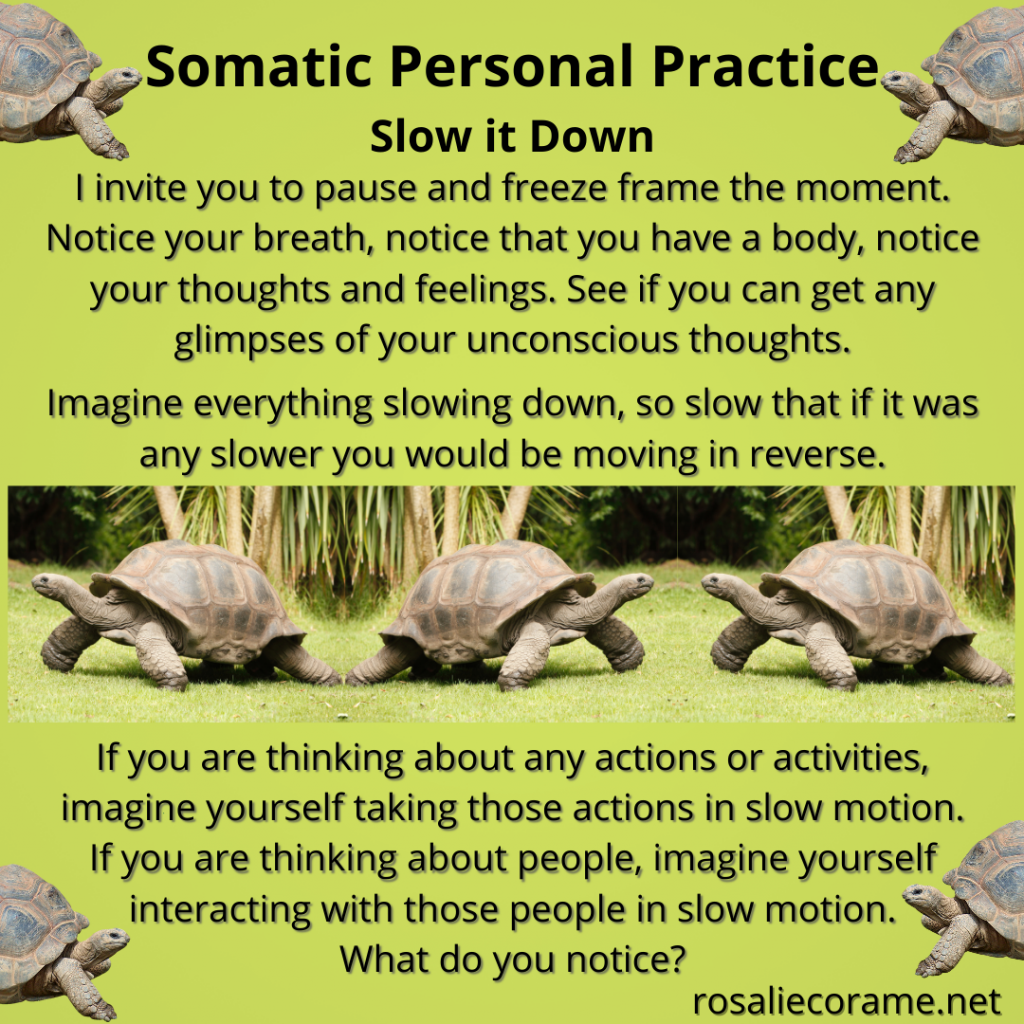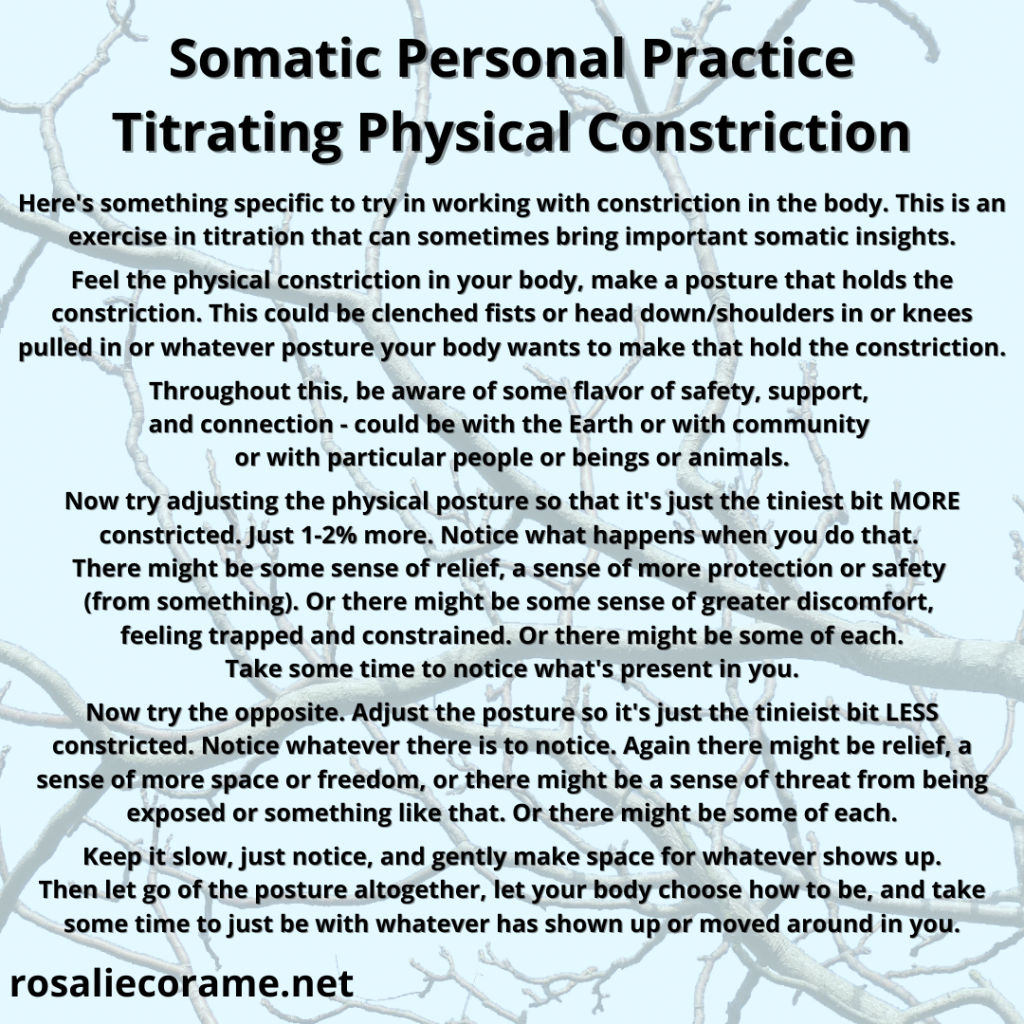
Titrating Physical Constriction
Here’s something specific to try in working with constriction in the body. This is an exercise in titration that can sometimes bring important somatic insights.
Feel the physical constriction in your body, make a posture that holds the constriction. This could be clenched fists or head down/shoulders in or knees pulled in or whatever posture your body might make that holds the constriction.
Throughout this, be aware of some flavor of safety, support, and connection – could be with the Earth or with community or with particular people or beings or animals.
Now try adjusting the physical posture so that it’s just the tiniest bit MORE constricted. Just 1-2% more. Notice what happens when you do that.
There might be some sense of relief, a sense of more protection or safety (from something). Or there might be some sense of greater discomfort, feeling trapped and constrained. Or there might be some of each.
Take some time to notice what’s present in you.
Now try the opposite. Adjust the posture so it’s just the tiniest bit LESS constricted. Notice whatever there is to notice. Again there might be relief, a sense of more space or freedom, or there might be a sense of threat from being exposed or something like that. Or there might be some of each.
Keep it slow, just notice, and gently make space for whatever shows up.
Then let go of the posture altogether, let your body choose how to be, and take some time to just be with whatever has shown up or moved around in you.


